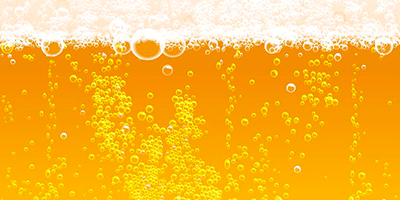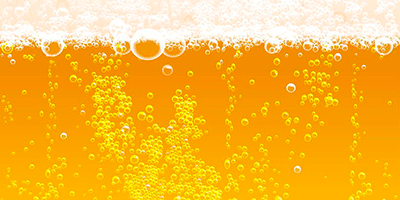Beer Forms Sudsy Surprise
As many party-goers know, smacking the top of an open beer bottle can cause an eruption of foam on an unsuspecting drinker. This prank, called “beer tapping,” may seem crude, but it demonstrates some sophisticated physics principles. New experiments and theoretical analysis of the foam generation reveal that what’s involved is a three-step process—bubble cavitation, diffusion-driven growth, and buoyancy-driven growth. The findings may extend beyond barroom buffoonery, as similar gas dynamics occurs in geological and astrophysical eruptions.
Beer tapping involves a sharp blow with the bottom of one glass bottle on the top of another. The shock causes the dissolved carbon dioxide in the tapped bottle to rapidly form bubbles in a sudsy surge. Although a lot is already known about dissolved-gas solutions, no scientific explanation has yet been given to beer tapping.
Here, finally, was a good reason to bring beer into the lab! Javier Rodríguez-Rodríguez of Carlos III University in Madrid, Spain, and his colleagues first examined how sudden impacts on a beer bottle generate pressure waves in the liquid that expand and compress bubbles. This so-called cavitation causes single bubbles to collapse and fragment into roughly a million smaller bubbles, according to the authors’ calculations. The “daughter” bubbles—which can also be created by shaking a bottle before opening—collectively provide a large surface area for carbon dioxide to diffuse out of solution. The resulting bubble growth lasts for tens of milliseconds, and then buoyancy forces begin to push bubble plumes upward, introducing them to new reserves of carbon dioxide. Self-acceleration ensues: The faster the bubbles rise, the faster they grow, and the bigger they get, the more buoyant they become. Similar processes may play a role in other gas-driven eruptions that occur in volcanoes and in deadly carbon dioxide releases from lakes.
This research is published in Physical Review Letters.
–Michael Schirber





